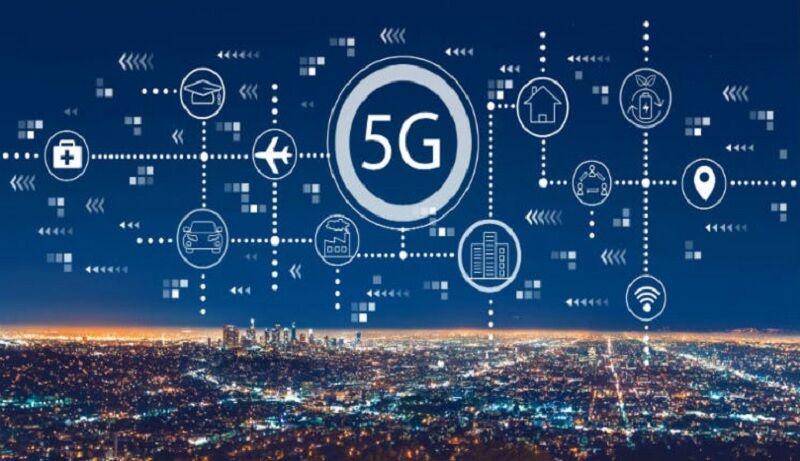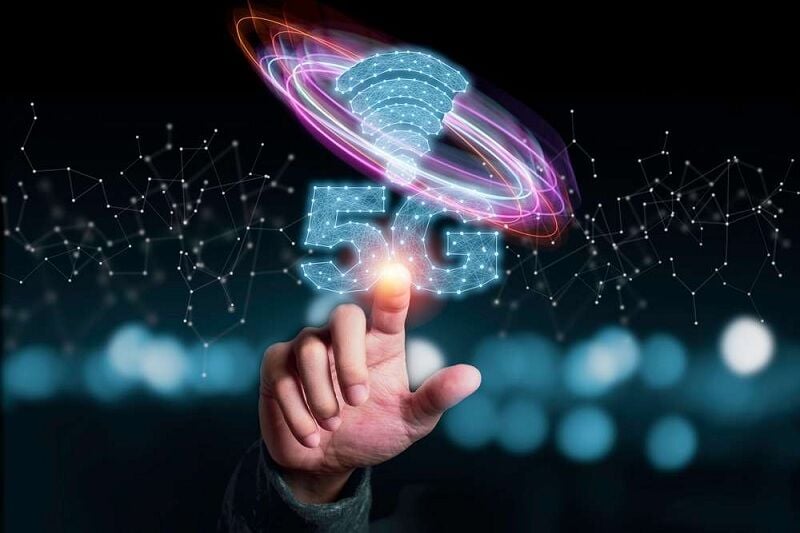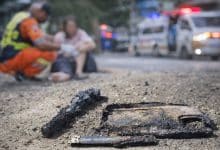The role of 5G in the internet of things (IOT)

Envision a scenario where your electronic devices interact instantaneously, rendering latency obsolete. Welcome to the forthcoming era propelled by 5G. This progressive technology is not merely about velocity, although it does pledge an impressive acceleration, estimated to be five times swifter than its antecedent, LTE. The crux of this technology lies in providing a more abundant and immersive mobile broadband experience that smoothens video gaming and high-bandwidth streaming like never before.
Nonetheless, the capabilities of 5G do not stop there. Upon further investigation, we observe how 5G is poised to radically transform the Internet of Things (IoT). From intelligent residences to self-directed vehicles, the ultra-low latency and high-speed connectivity offered by 5G are sure to have considerable ramifications.
Therefore, if you harbour interest in understanding the implications of a world powered by 5G on IoT’s potentiality, you have arrived at the appropriate location. Let us jointly delve into exploring the role of 5G within the IoT landscape.
Understanding 5G technology

When delving into 5G technology, it’s essential to grasp its key features and innovations. It promises to significantly alter the landscape of mobile broadband, offering unmatched speeds and a seamless user experience. This substantial development introduces notable features that play a role in the evolving era of the Internet of Things IoT.
Key features and innovations
5G New Radio, in theory, promises up to 10GBits speeds. However, a single user typically experiences maximum speeds of 100-200Mbits. This constitutes an impressive, about fivefold, enhancement over LTE.
This technological leap isn’t just about speed. The predominant advantage of such an advancement lies in providing a richer experience for mobile broadband usage. It’s primarily beneficial for video gaming and other high bandwidth streaming services. With 5G, mobile internet isn’t just faster; it’d become a viable alternative to fixed-line broadband for an increasing number of households.
These instrumental advances in 5G technology aren’t limited to individual users and gaming—mobile data content transmission too has experienced significant change, all thanks to the optic networks’ progression. Mobile fronthaul, a network segment connecting centralized baseband units (BBUs) with remote radio units in cloud radio access networks (CRANs), enables advanced wireless technologies like coordinated multipoint and massive multiple-input, multiple-output, profoundly influencing the fifth-generation (5G) wireless optical access networks.
Simultaneously, mobile backhaul connects BBUs with core networks, ensuring baseband data streams reach their respective destinations. These technologies are integral enhancements paving the way for faster and more efficient data transmission.
High-capacity passive optical networks (PONs), such as 100 Gbits PON, are techniques under review, targeting better coordination between RAN and PON. The goal remains to simplify the overall network, reduce latency, and improve the cost efficiency and power efficiency of the network.
In essence, the role of 5G in the Internet of Things (IoT) is proving to be substantial—redefining experiences, enhancing technologies, and paving the way for a future that’s far beyond high-speed internet.
The progression of IoT through the introduction of 5G

In line with the swift progression of technological advancements, there lies an immense potential for substantial alterations within the realm of IoT (Internet of Things). Spearheading this digital transformation is 5G, a crucial entity ready to revolutionize the functionality of IoT in various aspects.
Enhancing connection density
One integral aspect of 5G in the Internet of Things entails enhanced connection density. This increased density allows for a myriad of devices to connect simultaneously. With 5G, the capacity for connection soars notably, handling up to a million devices in every square kilometre, quite a feat when compared to its predecessor, the 4G network.
However, it’s not only about quantity. This new era of connection density bolsters the quality of IoT network connections, too. More devices on the network mean more communication, more data exchange, and ultimately, finer, more robust control of IoT applications.
From smart city infrastructure to remote healthcare facilities and logistic companies striving for precision, 5G’s superior connection density enhances overall system efficiency, security, and reliability.
Enhancement of speed and latency
The secondary yet crucial benefit of 5G in the field of Internet of Things (IoT) is its remarkable speed coupled with ultra-low latency. As an end-user, one will experience a significant increase in data transfer rates attributable to 5G technology. The speeds have the potential to attain up to 10 Gbits, although a regular user will likely experience speeds within the range of 100 and 200 Mbits. This denotes a nearly five-fold escalation compared to Long-Term Evolution (LTE).
The advantages of such speed are amplified when acknowledging 5G’s ultra-low latency—approximately around 1ms. This enhancement in response times proves beneficial for precision-critical IoT applications and services, including telesurgery within healthcare sectors, real-time monitoring within supply chain logistics, or autonomous vehicle technologies.
The high-speed, low-latency communication facilitated by 5G plays an essential role in shaping the future landscape of IoT—evolving it into a more dependable, responsive, and efficient network infrastructure. Indeed, it is undeniable that the part played by 5G in augmenting IoT is pivotal towards unleashing the enormous possibilities inherent in a truly interconnected global environment.
Real-World applications of 5G in IoT
Moving past theoretical underpinnings, let’s delve into tangible applications of 5G in the realm of IoT. These real-world implementations paint a vivid picture of how this transformative technology is reshaping our urban landscape, industrial processes, and healthcare systems.
Smart cities and urban infrastructure
Stepping into the era of 5G, it’s not just your devices that are becoming smart, cities are too. The immense data carrying capability and low latency of 5G revolutionize IoT applications in urban infrastructure, paving the way for smarter cities. From intelligent traffic management, streamlined waste disposal systems to advanced environmental monitoring, 5G enables real-time data collection and thorough analysis, thereby leading to highly efficient city systems. For example, 5G-enhanced IoT systems can monitor city infrastructures like water, lighting, and HVAC in real time, ensuring efficiency while minimising wastage.
Industrial automation
The industrial sector is also reaping the benefits of 5G technology in IoT. The low latency, high reliability and capacity to support hosts of connected devices make 5G a potent tool for smart factories and industrial automation. Monitoring equipment health, optimizing production processes or enabling remote operation of machinery, 5G supports it all in real-time.s.
Healthcare systems
Transforming more than just cities and industries, the potency of 5G is being felt in the medical field as well. Healthcare providers can use 5G IoT technology to monitor patient conditions, enabling immediate action based on real-time data. From personal fitness trackers that log vital stats, to advanced hospital systems that 5G has significantly advanced IoT in healthcare. The ultimate result is an industry better equipped to provide faster, more accurate and more personalised care than ever before.
Challenges and considerations for 5G and IoT integration

Delving into the integration of 5G in the Internet of Things (IoT), one can’t overlook the range of hurdles faced. While it’s true that superior 5G connectivity holds great promise for IoT applications, several pivotal challenges and considerations remain.
Network security and privacy issues
With the continuous expansion of IoT devices, network security bubbles up as a legitimate concern. Moreover, the privacy threats amplified by the enormous volume of data created by IoT devices cannot be ignored. As such, robust security protocols must be implemented to ensure network integrity and data privacy.
Infrastructure and cost challenges
Infrastructural transformation is essential to unlock the full potential of 5G in IoT.
The transformative potential of 5G within the Internet of Things (IoT) landscape is indeed notable. Its extraordinary speed, minimal latency, and capacity to manage a multitude of connections are fundamentally altering the dynamics. Furthermore, its influence in shaping the future of smart cities, industrial automation and healthcare is evident. Despite these challenges, the promise held by 5G within IoT remains irrefutable. It promises to revolutionize interpersonal interactions with our environment by enhancing intelligence, speed and efficiency levels.
Want to no more, How will climate change affect Thailand in the future. With its stunning variety of places, from mountains to beaches, Thailand is rolling up its sleeves to face the challenges of climate change head-on. .
Latest Thailand News
Follow The Thaiger on Google News:


























